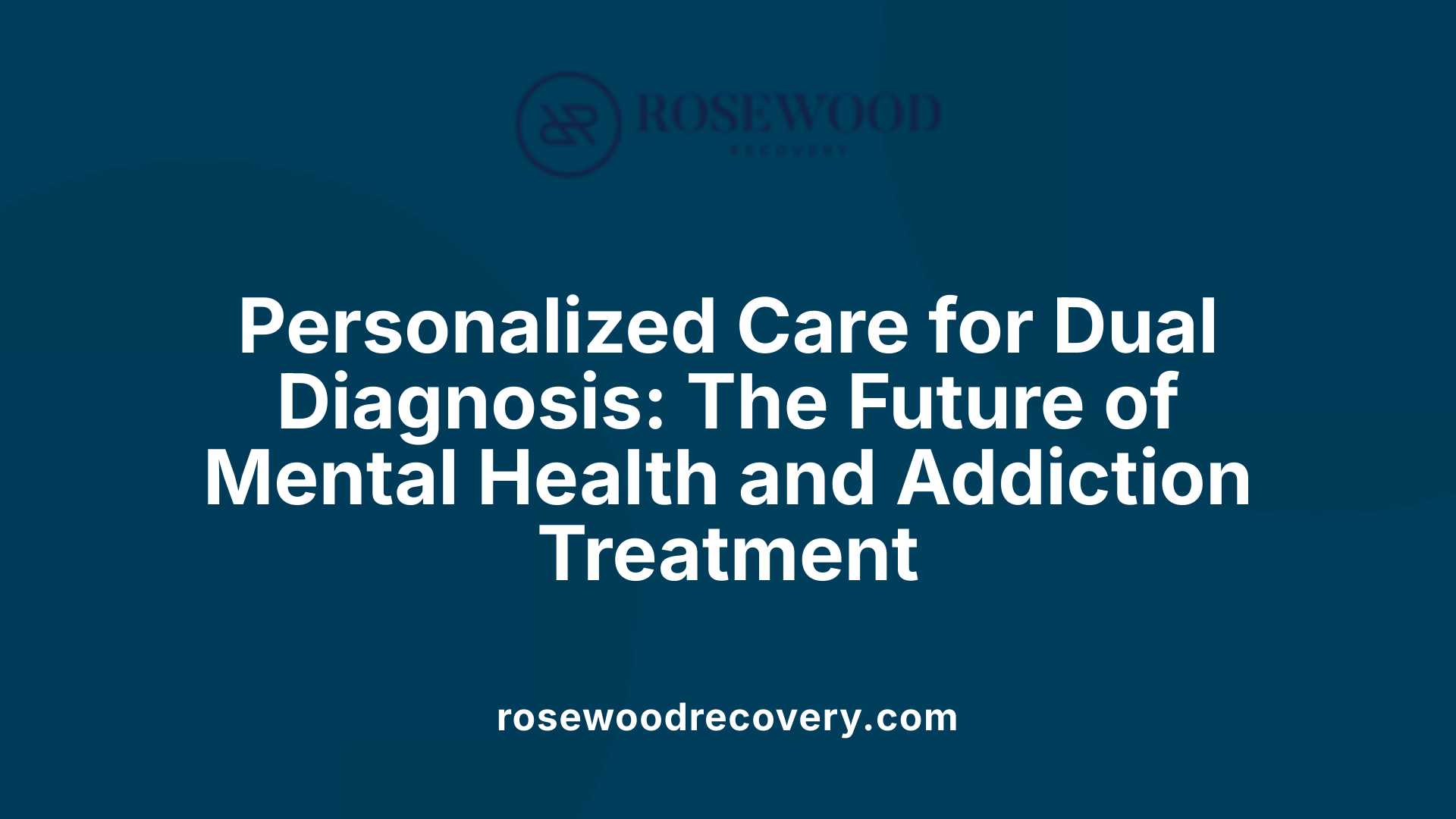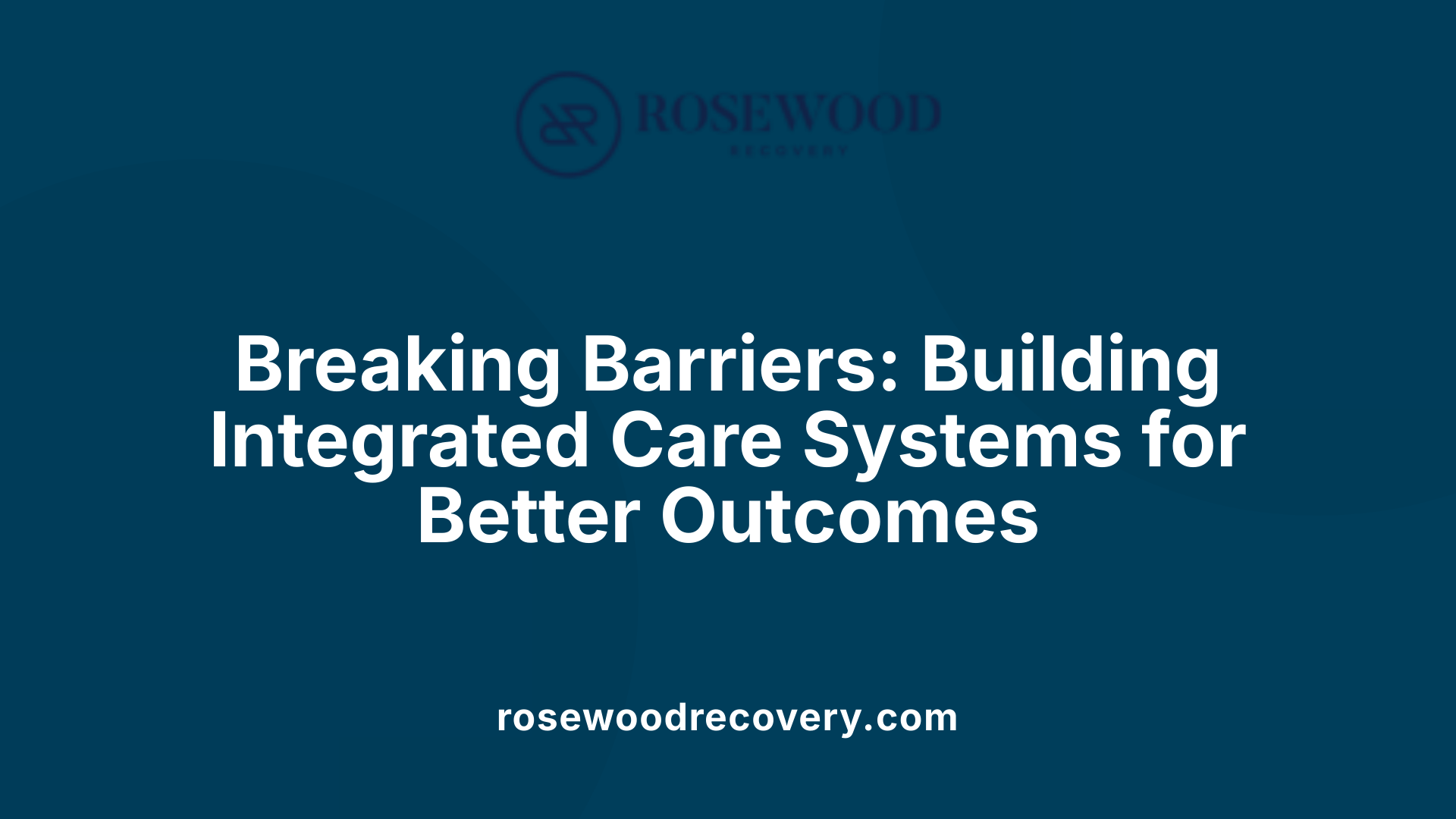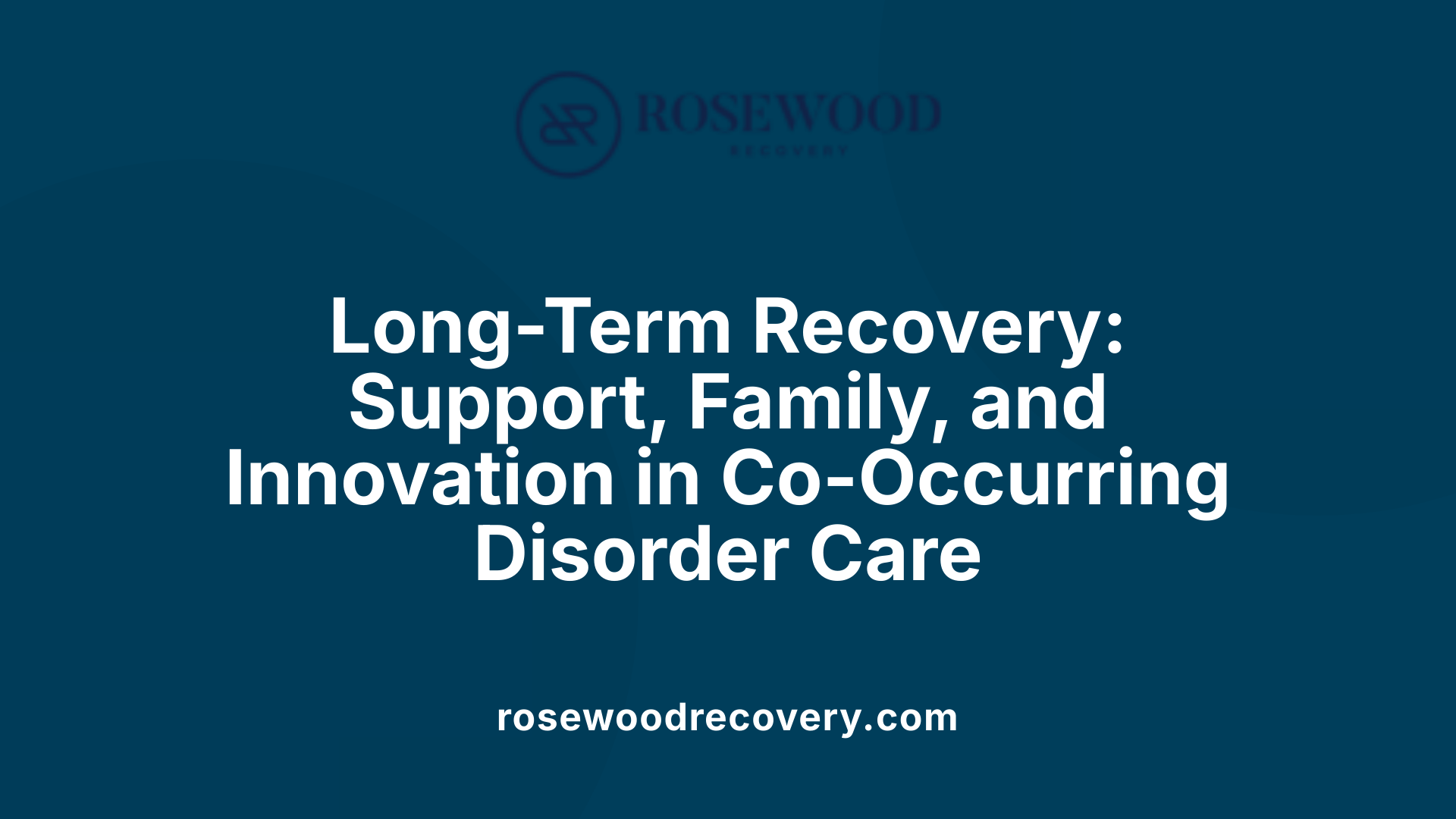The Challenge of Co-Occurring Disorders in Addiction Treatment
Dealing with substance use disorder alongside mental health conditions—commonly known as co-occurring or dual diagnosis—presents unique challenges for clinicians and patients alike. This intricate interplay of mental health issues and substance abuse complicates diagnosis, treatment planning, and recovery processes. Recognizing these complexities is crucial to developing effective, personalized care strategies that enhance outcomes. This article explores the impact of co-occurring disorders on addiction treatment, the barriers to effective care, and the innovative approaches that offer hope for long-term recovery.
Understanding Co-Occurring Disorders and Their Impact on Treatment
What are co-occurring disorders?
Co-occurring disorders, also known as dual diagnosis, refer to the simultaneous presence of a mental health disorder and a substance use disorder in an individual. These conditions often interact in complex ways, with each influencing the other’s severity and course. Common mental health issues that appear alongside addiction include depression, anxiety disorders, bipolar disorder, schizophrenia, PTSD, and ADHD.
The prevalence of co-occurring disorders is significant; research indicates that nearly half of people with a serious mental illness also suffer from substance use issues. Conversely, individuals with substance use disorders are twice as likely as the general population to experience mental health conditions.
Why is it important to address co-occurring disorders in addiction treatment?
Addressing both conditions concurrently is essential because untreated mental illnesses can worsen substance use behaviors, and vice versa. For example, many individuals with depression might use alcohol or drugs to self-medicate, which can lead to dependence and exacerbate depressive symptoms.
Effective treatment begins with early, accurate diagnosis, often challenging due to symptom overlap. When both disorders are properly managed through integrated care—combining medication, behavioral therapies, and support services—patients are more likely to experience reduced substance use, improved psychiatric symptoms, and a higher chance of sustained recovery.
Programs like those offered by organizations such as TruHealing Hagerstown utilize evidence-based approaches, ensuring patients receive comprehensive, personalized care that targets both conditions at once. This integrated approach is proven to foster better overall outcomes, including higher treatment retention and decreased relapse rates.
Factors hindering effective treatment of co-occurring disorders
Several barriers can impede optimal care for individuals with dual diagnoses. Systemic issues include the failure of healthcare systems to implement and sustain integrated treatment models, often due to limited provider training, resource constraints, and organizational silos.
Additional challenges involve diagnostic and billing restrictions that complicate access to comprehensive services. Stigma related to mental health and addiction can also discourage people from seeking help or adhering to treatment plans. Environmental factors like trauma, stress, and adverse childhood experiences further muddy the diagnostic process and complicate treatment.
Resource limitations and a lack of multidisciplinary, tailored approaches can leave some individuals without the support they need. This systemic and social landscape creates substantial hurdles to delivering effective, continuous care.
How do co-occurring disorders complicate assessment and treatment?
Assessment challenges stem from overlapping symptoms, making it difficult for healthcare providers to distinguish between mental health issues and substance use effects. A comprehensive, multi-faceted evaluation by trained professionals is crucial to accurately diagnose both conditions.
Treatment complexity arises because each disorder can worsen the other. For instance, untreated mental health issues may increase the risk of relapse, while ongoing substance use can intensify psychiatric symptoms.
Effective treatment requires a holistic, integrated approach involving behavioral therapies such as cognitive-behavioral therapy (CBT), dialectical behavioral therapy (DBT), medication management, family involvement, and peer support groups. Ongoing monitoring and tailored interventions are critical to address the bidirectional influence of these disorders.
Common challenges faced in treating co-occurring disorders
Treating co-occurring disorders presents numerous obstacles. Diagnostic difficulties are prevalent due to symptom overlap and the complex interplay between mental health and addiction.
Stigma remains a significant barrier, often leading to reluctance in seeking treatment or continuing care.
Treatment resistance can occur, especially if underlying issues like trauma or environmental stressors are unaddressed.
Systemic barriers, including limited access to trained professionals and inadequate healthcare infrastructure, hinder effective service delivery. Financial barriers, such as high treatment costs and insurance limitations, further restrict access.
Addressing these challenges requires systemic reforms, increased provider training, destigmatization efforts, and comprehensive treatment programs that incorporate medical, psychological, and social support.
| Aspect | Challenge | Solution or Approach |
|---|---|---|
| Diagnosis | Overlapping symptoms | Comprehensive, integrated assessment |
| Stigma | Avoidance of seeking help | Education, awareness campaigns |
| Treatment resistance | Complex cases, trauma | Tailored, multidisciplinary interventions |
| Systemic barriers | Lack of trained providers, resources | Policy reforms, funding, workforce development |
| Financial barriers | Cost of treatment | Insurance coverage, sliding scale services |
Understanding these dynamics emphasizes the importance of holistic, personalized, and accessible care to improve outcomes for individuals facing both mental health and substance use challenges.
The Neurobiological Link and Environmental Factors in Co-Occurring Disorders
How do shared neurobiological circuits affect both mental health and substance use disorders?
Both mental health and substance use disorders influence similar brain regions responsible for reward, decision-making, emotion regulation, and impulse control. Neurotransmitters such as dopamine, serotonin, GABA, and glutamate are integral to these processes.
When these circuits malfunction, they can foster conditions like depression, anxiety, or bipolar disorder, while also making substances more reinforcing and addictive. This overlap means that issues in these brain pathways can simultaneously drive mental health symptoms and substance cravings.
What role do genetic vulnerabilities and epigenetics play?
Genetic factors significantly increase the risk for both mental health disorders and substance use problems. Variations in specific genes may affect neurobiological systems, predisposing individuals to these conditions.
Epigenetic influences—changes in gene expression caused by environmental factors—also contribute. For example, trauma or chronic stress can modify how certain genes function, impacting brain chemistry and increasing susceptibility to co-occurring disorders.
How do environmental factors like trauma and stress influence co-occurring disorders?
Environmental influences such as adverse childhood experiences, trauma, and chronic stress are potent triggers. These factors can alter brain development and neurochemical balance, heightening vulnerability.
Trauma can lead to lasting changes in brain areas involved in emotion and stress response, like the amygdala and hippocampus. Individuals experiencing early trauma might use substances to cope, inadvertently reinforcing both mental health issues and addiction.
The interconnected impact on the brain and behavior
Research indicates that these neurobiological vulnerabilities and environmental stressors often interact, creating a cycle that entrenches both disorders. The changes in brain function can worsen mental health symptoms and escalate substance use, making comprehensive, integrated treatment essential.
| Factors | Effects | Underlying Mechanisms |
|---|---|---|
| Shared circuits | Influence reward, decision-making, emotions | Neurotransmitter imbalances involving dopamine, serotonin |
| Genetic risks | Predispose to mental illness and addiction | Gene variations affecting neural pathways |
| Trauma and stress | Trigger lasting brain changes | Stress hormones impact brain structure and function |
Understanding these overlapping neurobiological and environmental factors helps tailor treatments that address both conditions effectively, promoting long-term recovery.
The Role of Integrated and Personalized Treatment Approaches

Why is integrated care crucial for treating co-occurring disorders?
Integrated care models are essential because they address both mental health issues and substance use disorders simultaneously. Many individuals with dual diagnoses tend to experience worse health outcomes, such as higher hospitalization rates and increased relapse risks, if treated separately. By combining treatment for both conditions, holistic approaches improve recovery odds and long-term stability.
There are various types of integrated care, including coordinated, co-located, and fully integrated models. These approaches ensure that physical health and emotional well-being are treated in a unified manner, often through multidisciplinary teams working together. This collaboration helps in accurately diagnosing complex symptoms, providing consistent care, and reducing barriers like stigma or fragmented services.
What therapies and methods are used in treating dual diagnosis?
Behavioral therapies play a fundamental role in dual diagnosis treatment. Cognitive Behavioral Therapy (CBT) helps individuals understand and change negative thought patterns that contribute to their conditions. Dialectical Behavioral Therapy (DBT) is particularly effective for managing emotional regulation and impulsivity, common in co-occurring disorders.
Motivational Interviewing encourages individuals to explore their ambivalence about treatment and enhances engagement. Support groups such as 12-step programs provide ongoing peer support for recovery. Medications also form an important part of treatment, aimed at reducing cravings, managing mental health symptoms, and preventing relapse.
Research into cutting-edge therapies includes Transcranial Magnetic Stimulation (rTMS), ketamine, and deep brain stimulation (DBS). While promising, these treatments are still under investigation, and their use will depend on individual patient needs and emerging evidence.
Why is personalized, comprehensive assessment important?
Accurate diagnosis is the foundation of effective treatment. Because symptoms of mental illnesses and substance use disorders often overlap, comprehensive assessments by trained healthcare providers are vital. They consider medical history, environmental factors, genetic predispositions, and neurobiological influences.
Personalized treatment plans are then developed, tailored to each individual's specific circumstances. This personalization increases the likelihood of treatment adherence and success by aligning interventions with individual needs, preferences, and cultural contexts.
An integrated, person-centered approach allows clinicians to identify triggers, address underlying causes, and create sustainable recovery strategies. Overall, combining thorough assessment with adaptive treatment plans significantly enhances outcomes, leading to reduced substance use and improved mental health.
Overcoming Systemic Barriers and Enhancing Treatment Outcomes

What systemic challenges hinder effective treatment of co-occurring disorders?
Many healthcare systems face hurdles that limit the effective treatment of individuals with co-occurring mental health and substance use disorders. A significant challenge is the siloed nature of healthcare services, where mental health and addiction services operate separately, making integrated care difficult to implement. Additionally, policy limitations and a lack of trained professionals skilled in dual diagnosis treatment further exacerbate these issues.
Stigma associated with substance use and mental health conditions also discourages individuals from seeking help. Furthermore, insufficient funding and resource constraints restrict the development and expansion of comprehensive treatment programs. These systemic challenges create barriers that prevent many from accessing the timely, coordinated care they need.
How does training, support, and resource allocation impact treatment success?
To address co-occurring disorders effectively, it is crucial to invest in specialized training for healthcare providers. Educating clinicians on integrated assessment methods and treatment approaches ensures better diagnosis and tailored care plans. Support systems, including peer support groups and family involvement, can improve ongoing recovery efforts.
Allocating resources strategically can expand access to evidence-based treatment programs. This includes funding for multidisciplinary teams that work collaboratively, deploying support for community-based interventions, and ensuring facilities are equipped with the tools necessary to deliver high-quality care.
What role do evidence-based programs and policy reforms play in improving outcomes?
Implementing evidence-based programs, such as integrated dual disorder treatment (IDDT), has demonstrated improved outcomes like higher treatment retention, reduced substance use, and better psychiatric symptom management. These programs emphasize simultaneous treatment of both conditions, promoting a holistic approach.
Policy reforms are essential to support these practices. Revisions that promote a 'no wrong door' policy ensure that individuals seeking help are immediately directed to appropriate services, regardless of where they first present. Such reforms can also encourage insurance coverage for integrated care, remove legal and administrative barriers, and incentivize clinics to adopt comprehensive treatment models.
How are systemic improvements contributing to better recovery prospects?
Efforts to overhaul healthcare delivery systems, increase provider training, and implement policy reforms contribute significantly to closing gaps in care. When individuals receive timely, coordinated treatment tailored to their needs, outcomes such as reduced hospitalization rates, fewer relapses, and improved quality of life are more achievable.
Ultimately, a systemic shift towards integrated, accessible, and well-resourced care models fosters a more supportive environment for those battling co-occurring disorders. This approach not only enhances individual recovery chances but also reduces the broader societal burdens associated with untreated mental health and substance use issues.
| Challenge | Solution | Impact |
|---|---|---|
| Healthcare siloing | Implement integrated care models | Better coordination, improved outcomes |
| Policy limitations | Policy reforms supporting 'no wrong door' approach | Increased access and insurance coverage |
| Lack of trained clinicians | Specialized training programs in co-occurring disorders | Accurate diagnosis, effective treatment |
| Resource constraints | Increased funding and resource allocation | Expanded program availability, higher success rates |
The Importance of Continued Support, Family Involvement, and Future Research

Support groups and community resources
Ongoing support plays a crucial role in maintaining long-term recovery for individuals with co-occurring disorders. Support groups such as Alcoholics Anonymous (AA), Narcotics Anonymous (NA), and other mutual aid organizations offer peer support and a sense of community. These groups provide a platform for sharing experiences, gaining encouragement, and learning relapse prevention strategies.
Community resources, including outpatient clinics, mental health services, and specialized treatment programs, are essential to sustain progress. They often include case management, educational workshops, and skill development activities that empower individuals to manage both mental health and substance use challenges.
Family therapy and peer support
Family involvement is vital in the recovery process. Family therapy helps to improve communication, resolve conflicts, and strengthen relationships, creating a supportive environment conducive to healing.
Peer support networks, where individuals with similar experiences provide mentorship and encouragement, also contribute significantly. These networks can help reduce stigma, motivate ongoing treatment adherence, and offer relatable guidance.
Ongoing research for innovative treatments
Research continues to explore innovative therapies and medications to improve outcomes for co-occurring disorders. Emerging treatments such as transcranial magnetic stimulation (rTMS), ketamine therapy, and personalized medicine are being studied for their potential to target neurobiological aspects of these conditions.
Furthermore, advances in behavioral therapies tailored to individual needs, along with integrated digital tools and telehealth options, promise to expand access to effective care.
Supporting long-term recovery requires a comprehensive approach that incorporates community resources, family involvement, and cutting-edge research to continuously improve treatment methods and recovery success rates.
Towards Better Outcomes in Co-Occurring Disorder Treatment
Addressing co-occurring disorders within addiction treatment is vital for achieving successful recovery and improving patients' quality of life. Understanding the complex interplay of biological, psychological, and environmental factors allows clinicians to tailor integrated, holistic care plans that meet individual needs. Overcoming systemic barriers through policy reforms, increased training, and resource allocation is essential to expanding access to effective treatment. Continued research and development of innovative therapies promise to optimize outcomes further. Ultimately, fostering a collaborative, stigma-free environment with strong support systems can help individuals with dual diagnoses break free from cycles of dependence and mental health deterioration, paving the way for sustained recovery and well-being.
References
- Managing Life with Co-Occurring Disorders - SAMHSA
- Finding Help for Co-Occurring Substance Use and Mental Disorders
- Dealing With Co-Occurring Disorders During Your Recovery
- Common Comorbidities with Substance Use Disorders Research ...
- Understanding Co-Occurring Disorders in Substance Use ... - Kolmac
- Treatment for Substance Use Disorder With Co-Occurring Mental ...
- Co-Occurring Disorders and Other Health Conditions - SAMHSA



.jpeg)
